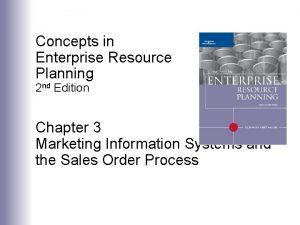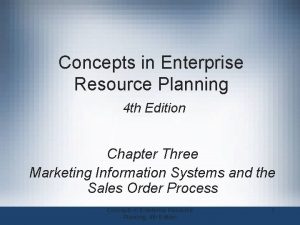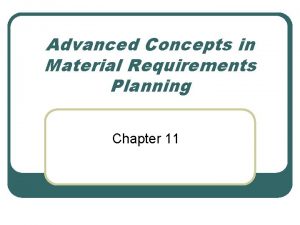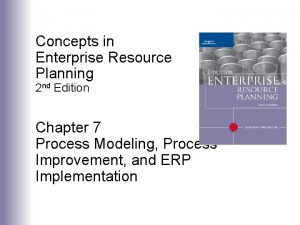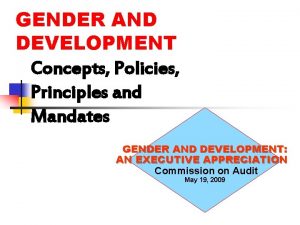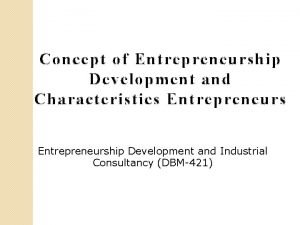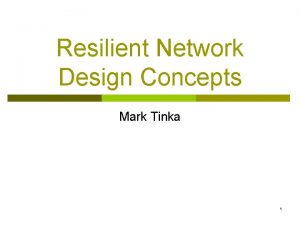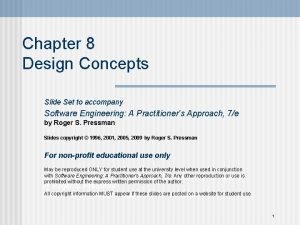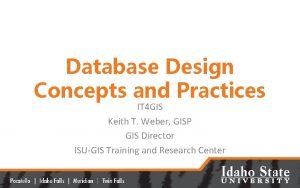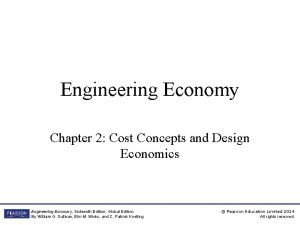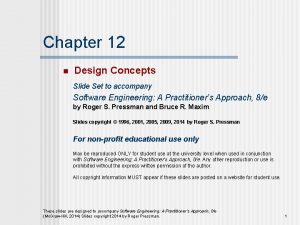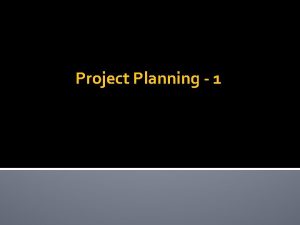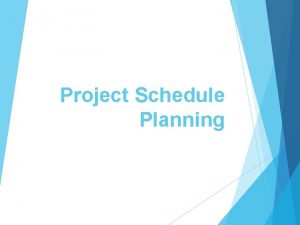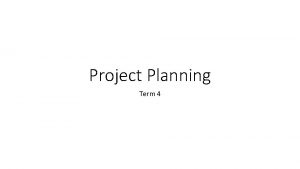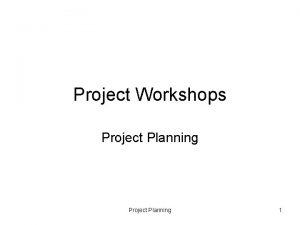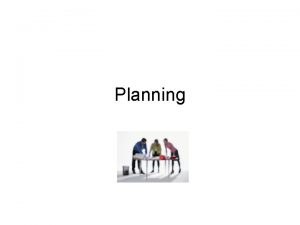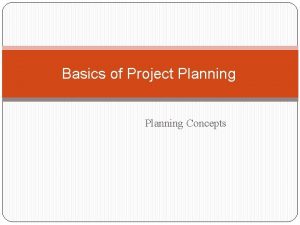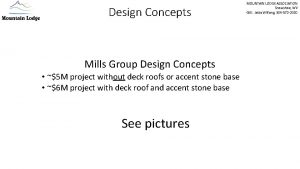Concepts Project program planning program design program development












- Slides: 12

Concepts: Project, program planning, program design, program development, project life cycle, project selection SESW 108: Program Development and Management Dr. Kazi Abdur Rouf Instructor Settlement Services Worker Certificate Social Service Worker Part-Time Diploma Program School of Social and Community Services Humber College Institute of Technology and Advanced Learning Building C, Lakeshore Campus, Toronto Tuesday, September 4 – December 11, 2012 6: 30 - 9: 30 PM (First class lesion)

Concepts • • • Project and program Project Manager Vs General Manager Project Manager vs Functional Manager Program Planning Program Design, Program Development, Project Life Cycle Project Selection Concept Paper Stage Gate

Concepts of Program/Project Management • A project is a temporary endeavor undertaken to crate a unique product or service (PMI). • It s specific, timely, usually multidisciplinary, and always conflict ridden. • Projects are parts of overall programs and may be broken down into tasks, subtasks, and further if desired. • Project Manager (PM) must have special skills in conflict resolution. The PM must be creative and flexible, and have the ability to adjust rapidly to changes. • When managing non-projects, the general manager tries to manage by exception. Non-projects almost everything is routine and is handled routinely by subordinates. • General management’s success is dependent on good planning. For project, planning is much more carefully detailed and project success is absolutely dependent on planning. The project plan is the immediate source of the project’s budget, schedule, control, and evaluation. • Non-projects rarely crossing organizational boundaries and the projects crossing them freely.

General management/Project management • In general Management, there is a reasonably well- defined managerial hierarchy, . Superior-subordinate relationships are known and lines of authority are clear. In Project management, this is rarely true. • The PM may be relatively low in the hierarchical chain of command. • This does not, however, reduce his or her responsibility of completing a project successful. • Responsibility without authority of rank or position is common in project management as to be the rule. • Pm depends on negotiation skills to gain the cooperation of the many department. • Project managers have responsibility for accomplishing a project, but little or no legitimate authority to command the required resources from the functional department. • The PM must have win-win negotiation skills to obtain the resources: technology, information, resources (man power, logistics, contingencies, finance etc. )

Distinction between Project Manager and Functional Manager • Here is a sharp distinction between the manager-as- facilitator and the manager-assupervisor. • PM should facilitate the participative management specially responsibility for the planning and organization’s specific tasks is given to the individual or group that must perform. • The Pm uses the system approach and TM adopts the analytical approach to understand solving problems. • PM should consider the project is a system composed f tasks (subsystems), which are, in turn, composed of subtasks and so on. The PM should understand larger system of the organization, and its subsystems influences and their impact on the project and its deliverables. • PM is responsible for planning, organizing, staffing, budgeting, directing and controlling the project. • PM may work for a program manager who closely supervises the programs. Here PM willing to help what exactly to do. This is known as micromanagement, which could be over control of the resources. • However such PM jobs depends on project critical situation, urgency, and team efficiency.

Project Life Cycle The Project Life Cycle provides an overview of the project phases: concept, design, implement and commission. The Risk through PLC figure outlines how risk and amount at stake change as the project progresses. • Risk and opportunity are high at the outset of the project, when there is the greatest degree of uncertainty about the future • These unknowns are eventually zero when the project has been successfully completed. • The period of highest vulnerability to risk occurring is during the last two phases (implementation and commissioning). During these phases, adverse conditions may be discovered, particularly during commissioning and start up

The life cycles of Projects • A project’s life cycle measures project completion as a function of either time (schedule), or resources (budget) with assigned manpower • The project manager must sure that the project plan really reflects the wishes of the client as well as abilities of the project team and is designed to be consistent with the goals and objectives of the parent firm. • The Project life : Slow start, Quick momentum, and slow finish

An alternate project life cycle Project start slowly and moving slowly and then quick momentum Hence two different paths (life cycles) along with project progress from start to completion. One is S-shaped and the other is shaped These two paths are very important for successful project completion.

How projects can select • Several conditions depend on selecting projects • Is the project potentially profitable? Does it have a chance of meeting return on investments ? • Does the organization have or can it easily acquire, the knowledge and skills to carry out the project successfully? • Does the project involve building competencies that are considered consistent with the organization's strategic plan? • Does the organization currently have capacity to carry out the project on its proposed schedule? • There are two ways/methods for selecting projects • Nonnumeric selecting Methods: The Sacred Cow- overlook subordinate’s desire fir long –run employment; the operating/ competitive necessity – necessary for continued operations of a group; comparative benefits- Select projects from a list of projects. • Numeric Selection Methods: Financial assessment methods- economic value o the organization; scoring methods- measure nonmonetary advantages in addition to monetary pluses. The weighted scoring method is the most useful.

The Project Plan • Projects are usually subdivisions of a major program that an organization wishes to accomplish such as a new information system development program in the settlement=t counseling services organization or an innovative product development program: diabetic education to the seniors. • In making project selection decisions, it is vital to consider the interactions among various projects and to manage the projects as a set. • It depends on project budget, costs and services of the organizations. If the funding are available and continuing, organizations usually run their projects with the TOR of the donors. • The following projects can be effectively choose and manage depending on project TOR and project resources: • Derivative projects: these projects seek to make incremental improvements in the project and or process. • Here majority projects are innovative • Breakthrough projects: They are opposite of the derivative projects, they typically seek the development of a new generation of products. Example fiber-optic cable vs copper wire.

Project Plan- continue • Platform Projects: Platform projects fall between derivative and breakthrough projects. A key difference between platform projects and breakthrough projects is that platform projects stick with existing technology. • R &D projects: R&D projects entail working with basic technology to develop new knowledge and innovation of services. • Depending on focus, an R &d projects might lead to breakthrough, platform or derivative innovations. • Long-run success is determined by the organization’s portfolio of projects

Stage Gate (set of roles, decisions before starting a project) • • • A decision point on whether a project is proceeding as planned and a go, no-go or hold decisions is made: Example- SESW-105 course is on hold by Decision makers of the college A stage f=gate is intended to identify one or more essential elements, breakthroughs that makes continuation of the project feasible It s not deliverables, report, or deadline. It is not a phase or is it a level of effort (1). It is about testing several potential algorithm approaches to see which shows the highest potential for supporting the speedup (2) Testing a variety of the resulting approaches with existing resources to identify if there are limits to optimality Here stage gates might be described as: • If none of the algorithm approaches show potential for speedups , then place the project on hold or stop • If the algorithm application shows no/low potential for speedup, then place the project on hold or stop
 Crm vision statement examples
Crm vision statement examples Enterprise resourse planning
Enterprise resourse planning Concepts in enterprise resource planning
Concepts in enterprise resource planning Material requirements planning concepts
Material requirements planning concepts Fitter snacker
Fitter snacker Gender and development principles
Gender and development principles Entrepreneurship development concept
Entrepreneurship development concept Mark tinka
Mark tinka Design concepts in software engineering
Design concepts in software engineering Database design concepts
Database design concepts Engineering economy chapter 2 solutions
Engineering economy chapter 2 solutions Design concepts in software engineering
Design concepts in software engineering Site design concepts
Site design concepts

